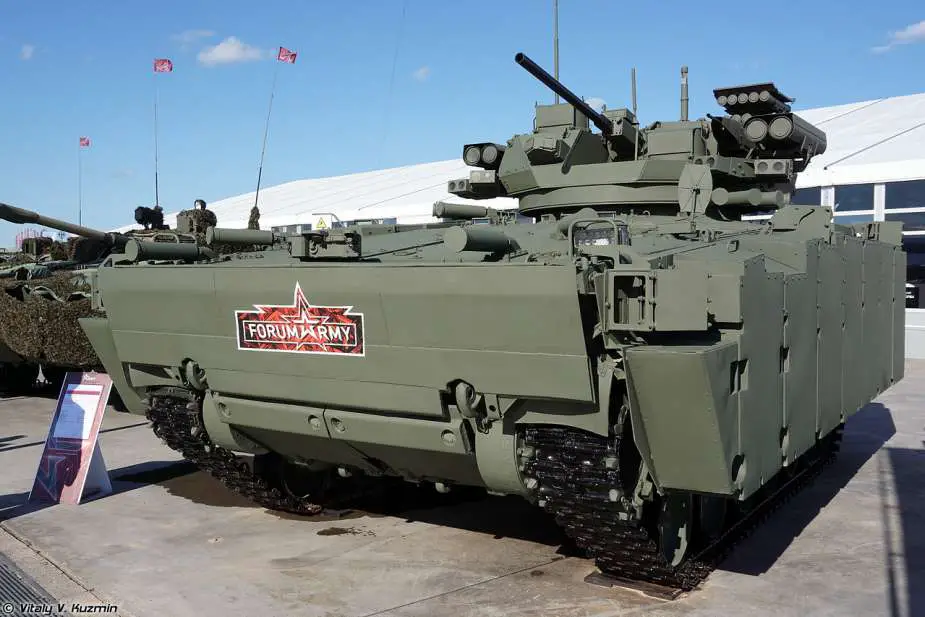Breaking news
Russia's Future Infantry Fighting Vehicle Kurganets-25 undergoes Chassis Overhaul.
On September 6, 2023, it was reported that Russia's future Infantry Fighting Vehicle, based on the "Kurganets-25" project, has undergone a significant redesign, particularly concerning its chassis. Roman Khromov, the Deputy Executive Director for State Defense Orders and Military-Technical Cooperation at Kurganmashzavod, stated that the new prototype differs considerably from earlier versions.
Follow Army Recognition on Google News at this link

IFV B-11 Kurganets-25 with BM Epokha (Picture source: Vitaly V.Kuzmin )
The war in Ukraine has dramatically increased the demand for armored vehicles. Following numerous captures and destructions, the Russian army is in dire need of replenishing its fleet of armored vehicles. The development of a new IFV (Infantry Fighting Vehicle) is therefore crucial for Russia, but it now appears that some changes have been made to the "Kurganets-25" project.
The Kurganets-25 is designed to be the successor to the BMP-3. It is based on the universal Armata combat platform and is lighter than the T-15 Armata. There are two versions of the vehicle: a heavily armed IFV version that can carry 6 to 7 troops, and a lightly armed APC version that can carry 8 troops. The armament of the Kurganets-25 IFV includes a remote-controlled Bumerang-BM turret with a 30mm 2A42 automatic cannon, 9M133 Kornet-EM anti-tank missiles, and a 7.62mm PKT coaxial machine gun.
The new Russian IFV has its engine and transmission compartment located at the front right of the hull. The vehicle features a unique troop exit system, equipped with an additional door. It weighs 25 tons and is equipped with dynamic and active protection systems. The maximum speed is 80 km/h on the road and 10 km/h in water, powered by an 800 hp engine.
Work on the "Kurganets-25" continues, as the Russian Ministry of Defense, the project's main customer, has requested specific modifications. The primary changes have been made to the vehicle's chassis to improve its reliability while simplifying its maintenance and operation. The current version of the vehicle differs from the prototypes presented in 2015. There is no information yet on a possible change in armament, but it has been suggested that the existing 30mm automatic cannon might be too weak and should be replaced by a larger caliber. The vehicle's large size has also been a subject of criticism.
"The development and testing phase is not yet complete. Additional requirements from the state customer have led to a reconfiguration of the vehicle. In other words, the prototypes initially presented at the 2015 parade and the vehicle currently undergoing testing are not exactly the same," said Khromov.
Russia does not yet seem ready to deploy a new Infantry Fighting Vehicle in Ukraine. However, the project is not at a standstill and continues to progress, with Russia still requesting adjustments. Its presence on the battlefield is not imminent, and Russia continues to produce and modernize older IFV models.

Kurganets-25 displayed at Army 2019 defense exhibition (Picture source: Army Recognition)


























